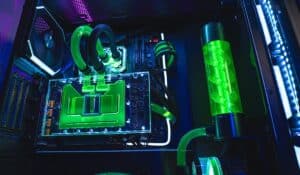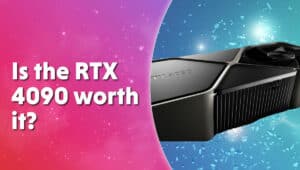What is DLSS 3 and how does it work?
In case your new behemoth GPU doesn't quite reach the frames you need with maxed out settings
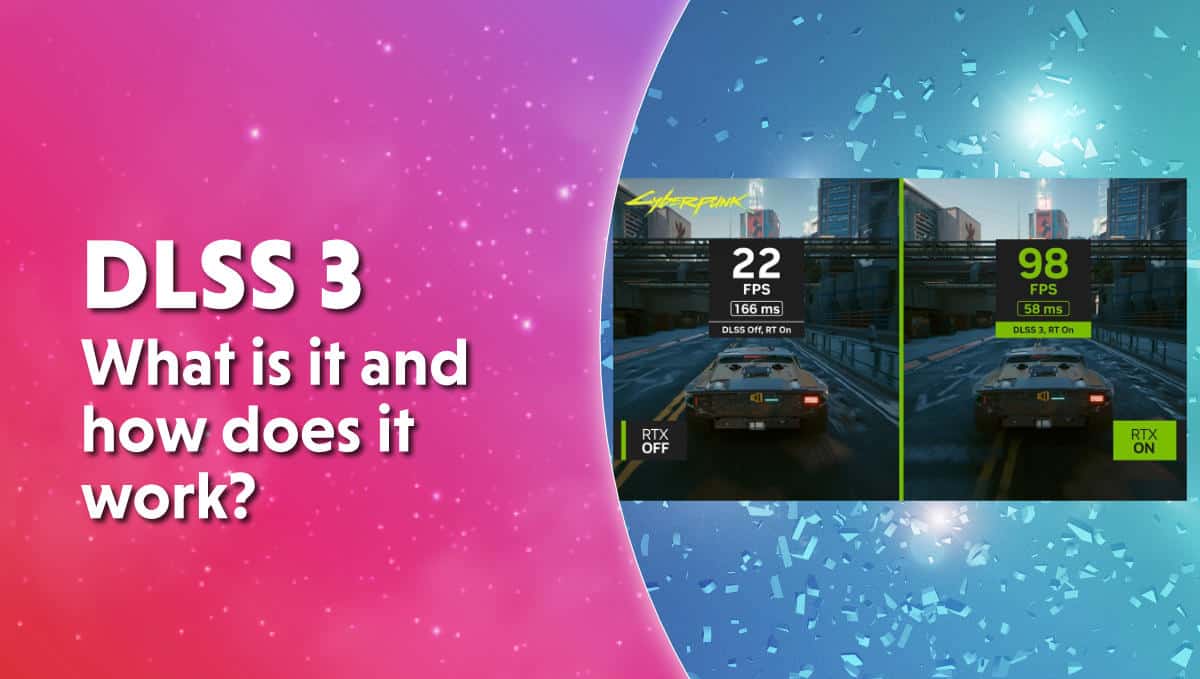
WePC is reader-supported. When you buy through links on our site, we may earn an affiliate commission. Prices subject to change. Learn more
Nvidia finally announced its RTX 4000 series of graphics cards. And with the new Ada Lovelace generation of cards, it also showed off the next generation of AI boost with DLSS 3. Further improving the performance of games with the use of the Tensor Cores and AI of the RTX graphics cards.
This new generation of technology further improves upon the previous generations. It still uses the work of AI to interpolate frames but also utilizes the new tech available inside the new cards. Even with all the previous improvements like DLSS 2.2, there are even more added.
The new DLSS 3 And so we take a closer look at how it has achieved that.
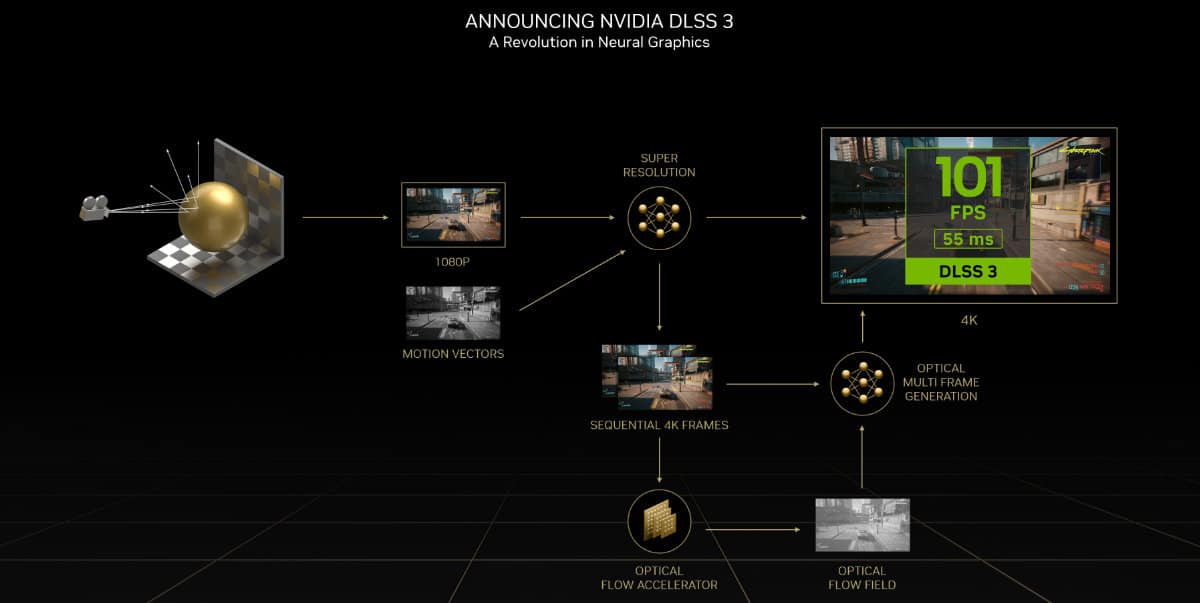
What is DLSS 3?
DLSS 3 is the next revolution of neural graphics. It is the further improvement of Nvidia’s proprietary technology to gain even more performance. With a new method of doing so further pushing what the cards can achieve.
It works to interpolate frames instead of pixels to make it look more seamless by adding more in between to fill in the gaps. But this will also move more work to a post-process that moves the work to the GPU. This will in fact double the performance of CPU-bound performance.
How does DLSS 3 work?
Previously DLSS worked by rendering fewer pixels with lower resolutions, then used AI to construct the final sharp high-res image. Then further DLSS 2 further improved the quality and performance with an AI that adapted without specific training. And this has been added to 216 games, as opposed to FSR it has to be implemented specifically to the game.
Now Nvidia has revolutionized a boost the performance of the technology. It adds Optical Multi Frame Generation for the creation of completely new frames, not just adding more pixels. It also adds Reflex for better responsiveness as well. So now with the fourth generation Tensor cores and Optical Flow Accelerator, it can achieve even better performance.
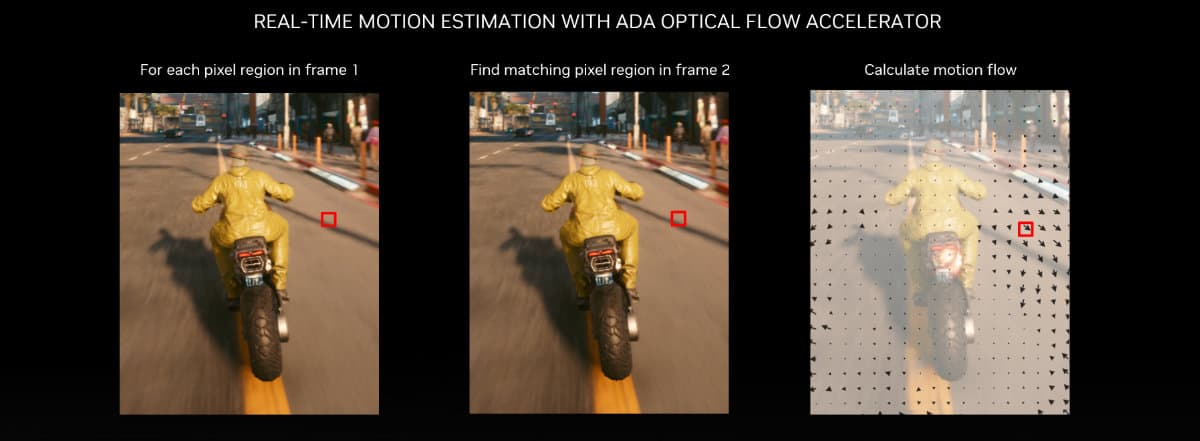
The Frame Generation autoencoder uses four inputs, current and prior game frames, along with the optical flow field from the accelerator and game engine data like vectors and depths. This accelerator then analyzes two sequential frames and calculates the flow field. Which is the direction and speed of the pixel movements between the frames. It even grabs the nongame engine features like particles, reflections, shadows, and lighting.
This allows those features to be accurately predicted and tracked, without any inaccuracies. These pixels are then fed to the AI network to decide how to use all the data to create the intermediate frames.
The AI of DLSS 3 is reconstructing three-fourths of the first frame and reconstructing the entire second frame. So it is reconstructing seven-eights of total pixels. A significant boost overall. Especially with the new shader execution reordering in the architecture to further improve ray tracing performance.
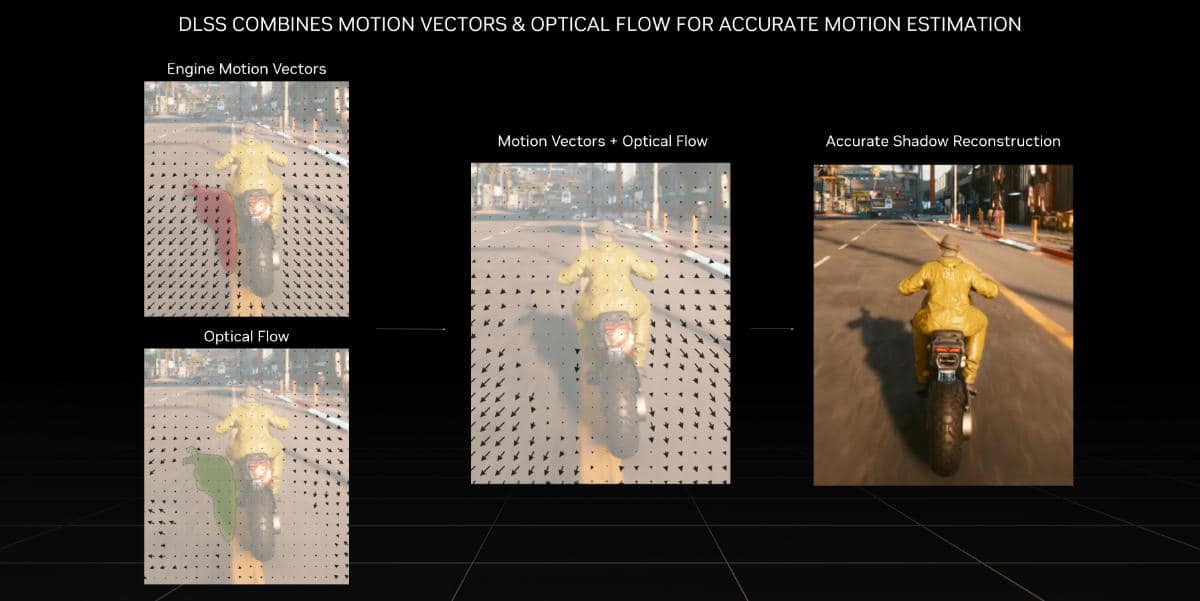
DLSS 3 performance
In our ROG Strix RTX 4080 review, we got to test out the performance of DLSS 3. Both Cyberpunk 2077 and Microsoft Flight Simulator had beta builds with the new technology. It gives us an insight into what to expect from the new tech that will help the performance of the RTX 4000 series cards.
Microsft Flight Sim is known for its CPU-bound performance and so an ideal candidate for DLSS to help improve it. And in just the beta performance we see the average framerate increase by 113%, more than double without it on. Especially handy when trying to run the game at maximum settings.
For Cyberpunk, we also get a good look at what it can achieve. Also running at full with psycho ray tr acing we see the performance just above 43 FPS. So with DLSS enabled we see the performance skyrocket. With it increasing by 209%, over triple what it is without. So you can really see the improvement and be able to enjoy the game fully.
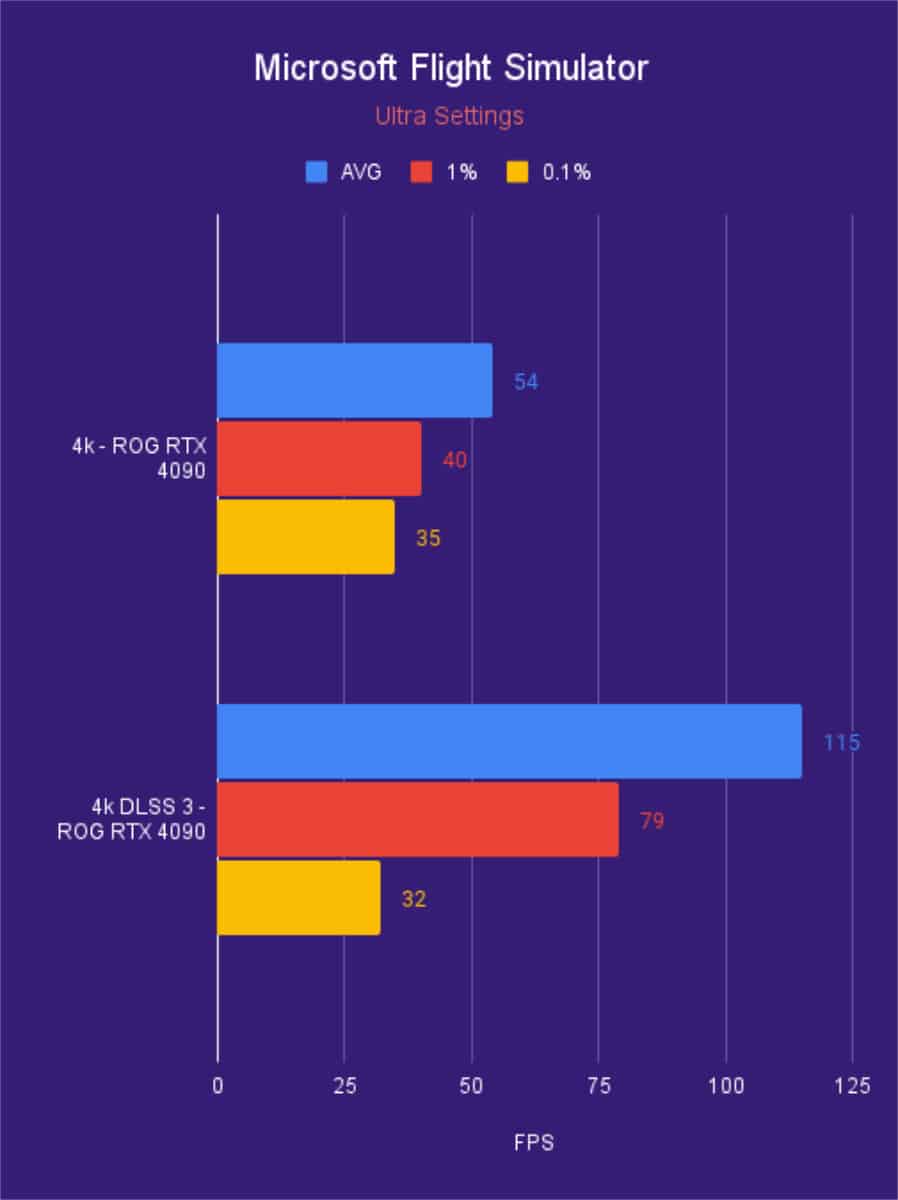
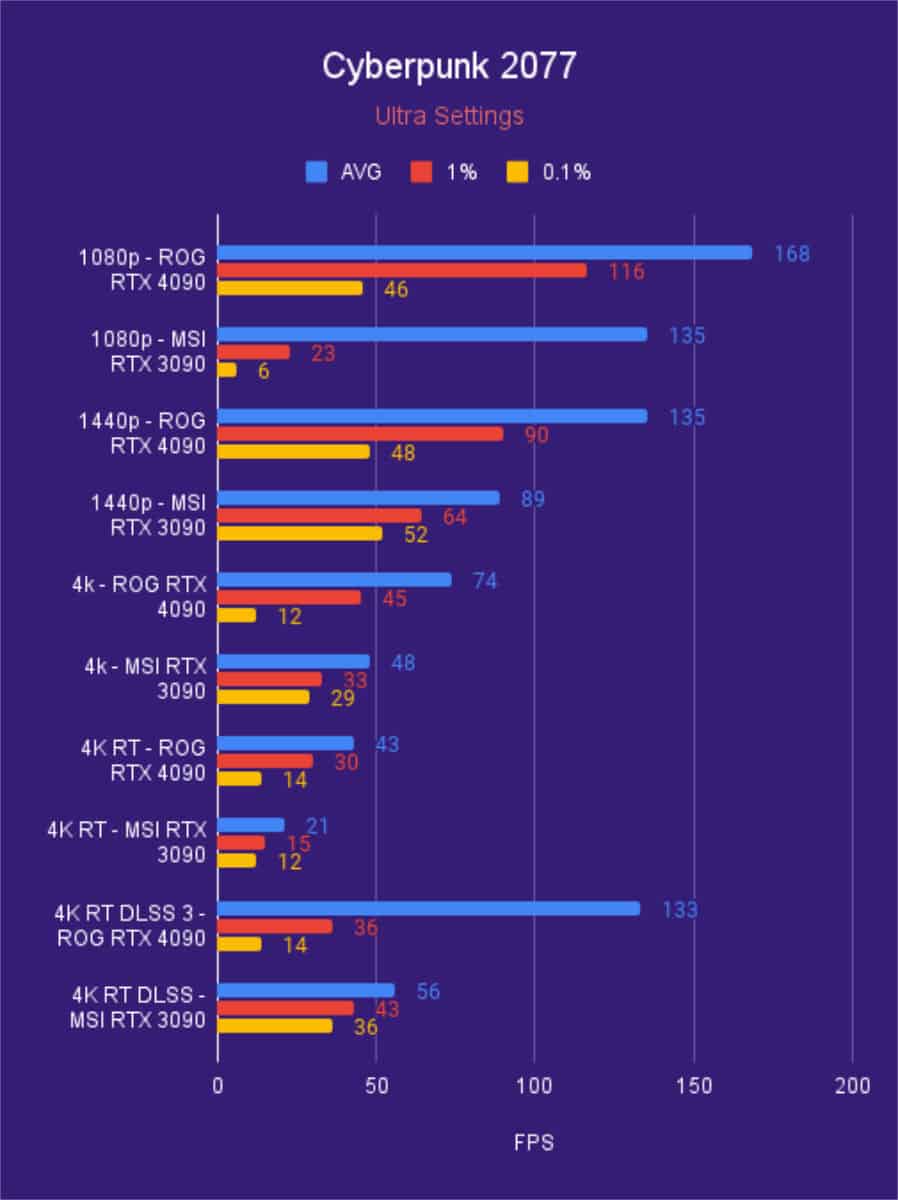
DLSS 3 FAQs
Is DLSS 3 exclusive?
Yes, DLSS 3 is exclusive to just the new RTX 4000 series graphics cards. This is because it utilizes the new technologies found on the cards themselves not featured on the previous RTX cards.
Will 30 series get DLSS 3?
No, it will not. The new updated version requires technology features not found in the previous architectures. So it will only be available for the RTX 4000 series cards.
How much performance does DLSS 3 give?
On its current benchmarks, Nvidia suggests a huge range of performance, from full games to mods and demos. But it ranges from 2-4x the performance across the board. Most notably in Microsoft Flight Simulator and Warhammer, which are usually CPU bound.
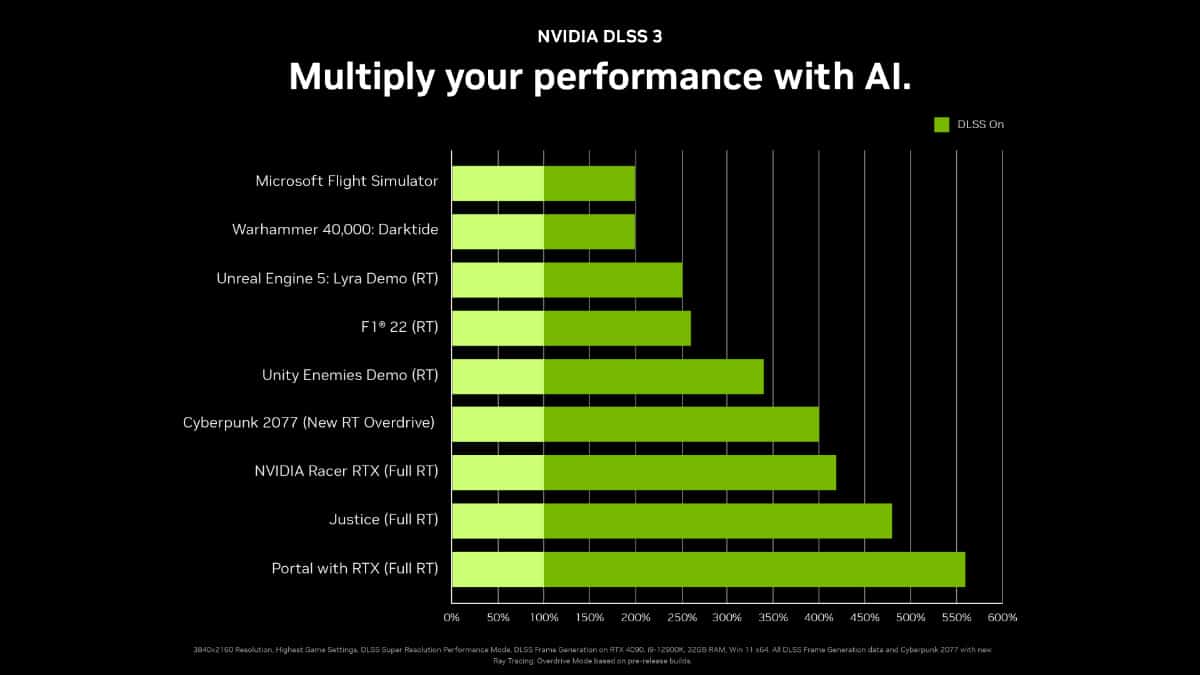
Which games support DLSS 3?
DLSS 3 will become available alongside the RTX 4090 launch in October. It has promised to be added to over 35 games and apps on launch. These will be:
|
|


